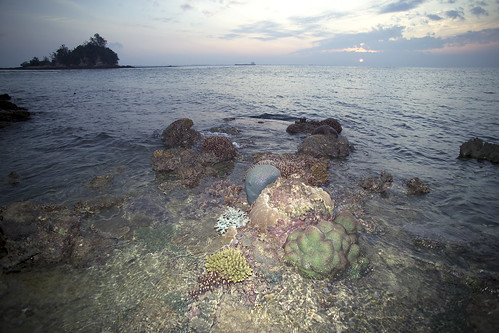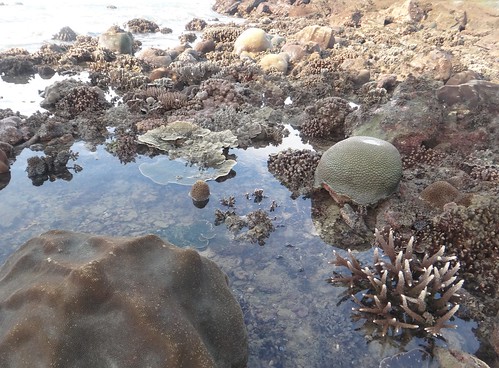 |
| Singapore's best reefs are found at Pulau Satumu the location of Raffles Lighthouse, Feb 2008 |
Why does murky water harm corals?
Reef-building hard corals need sunlight because they harbour microscopic, single-celled algae (called zooxanthellae) inside their bodies. The algae undergo photosynthesis to produce food from sunlight. The food produced is shared with the coral polyp, which in return provides the algae with shelter and minerals. It is believed this additional source of nutrients from the zooxanthellae help hard corals produce their hard skeletons and thus expand the size of the colony faster.
 |
| Rich reefs during the Mega Marine Survey, May 2013. |
 |
| Rich reefs during the Mega Marine Survey, May 2013. |
More about the dredging near Raffles Lighthouse
From MPA's PORT MARINE NOTICE NO. 11 OF 2016 dated 26 Jan 2016
DREDGING WORK OFF PULAU SATUMU
With effect from 27 Jan 2016 to 29 Mar 2016.
Off Pulau Satumu, within the working area (see attached chartlet):
Working Hours : 24 hours daily including Sundays and Public Holidays.
The dredging work will be carried out by Trailer Suction Hopper Dredger (TSHD) pulling the draghead over the seabed. The TSHD is self-propelled and will maintain a speed of around two knots during the dredging work. Further enquires relating to the project can be directed to Mr Joachim Lebbe, Works Manager at Tel: 9646-7942 (email: lebbe.joachim@diapshapjv.com).
What is involved in this kind of work?
Here's some information about dredging on wikipedia
Trailing suction
A trailing suction hopper dredger (TSHD) trails its suction pipe when working, and loads the dredge spoil into one or more hoppers in the vessel. When the hoppers are full the TSHD sails to a disposal area and either dumps the material through doors in the hull or pumps the material out of the hoppers. Some dredges also self-offload using drag buckets and conveyors.
 |
| From the wikipedia site, this is what a trailing suction hopper dredger (TSHD) looks like. |
What are some of the environmental impacts of dredging?
More information about dredging on wikipedia (in brackets are my explanations of 'cheem' science words).
Dredging can create disturbance to aquatic ecosystems, often with adverse impacts. In addition, dredge spoils may contain toxic chemicals that may have an adverse effect on the disposal area; furthermore, the process of dredging often dislodges chemicals residing in benthic substrates (sea bottom) and injects them into the water column (basically, stirs things up).
The activity of dredging can create the following principal impacts to the environment:
- Release of toxic chemicals, including heavy metals and PCB, from bottom sediments into the water column.
- Short term increases in turbidity (murkiness), which can affect aquatic species metabolism (animal breathing and eating) and interfere with spawning (reproduction).
- Secondary effects from water column contamination of uptake of heavy metals, DDT and other persistent organic toxins, via food chain uptake and subsequent concentrations of these toxins in higher organisms including humans. (Should someone tell the fishermen who fish nearby?)
- Secondary impacts to marsh productivity from sedimentation
- Tertiary impacts to avifauna (birds) which may prey upon contaminated aquatic organisms.
- Secondary impacts to aquatic and benthic (bottom-dwelling) organisms' metabolism (living processes) and mortality (death).
- Possible contamination of dredge spoils sites (area where the dredged stuff is dumped, where is this?).

